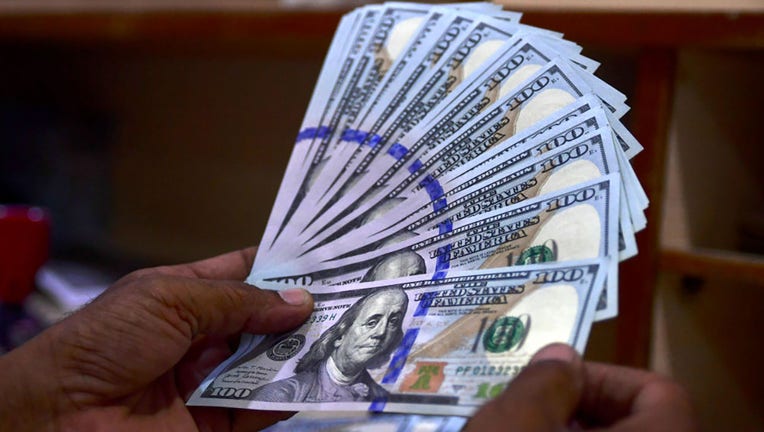401(k) hardship withdrawals increase as inflation stays high

US dollar notes are pictured in a file image on July 19, 2022. (Photo by ASIF HASSAN/AFP via Getty Images)
A record number of Americans are dipping into their retirement savings accounts for financial emergencies amid ongoing high inflation.
Hardship withdrawal activity from 401(k) accounts increased in 2023, going from 2.8% of people in 2022 who initiated a hardship withdrawal to 3.6% of participants last year, according to the Vanguard Group, which tracks about 5 million accounts.
Vanguard noted how the hardship withdrawal increase could signal "financial stress" among more households.
The pre-pandemic average was about 2%, FOX Business reported – adding that 2023 marked the highest level since Vanguard began tracking the data in 2004.

What causes inflation?
There are three factors that could lead to inflation which include demand-pull inflation, cost-push inflation and built-in inflation.
About 40% of individuals who dipped into their 401(k) last year did so to avoid foreclosure — up from about 36% in 2022, Vanguard data showed.
Meanwhile, high inflation has created more financial pressures for many U.S. households, which are forced to pay more for everyday necessities like food and rent.
What’s a 401(k) hardship withdrawal?
A 401(k) plan allows employees to contribute a portion of their wages to individual savings accounts for retirement. Employers can, and often do, contribute to employees’ accounts.
There are a number of ways to withdraw money from a 401(k), including taking a loan or making a hardship withdrawal – which must be due to severe financial hardship.
The IRS uses the term "immediate and heavy financial need," and examples include medical expenses, money to prevent eviction or foreclosure, funeral expenses and certain education expenses.
Vanguard said its lower-income participants are much more likely to take a hardship withdrawal than higher-income participants, noting a lack of emergency savings outside the 401(k) account.
In 2022, about 80% of hardship withdrawals taken by lower-income participants were used to avoid loss of their home, to repair damage to their home, or for medical expenses, the group said.
"Given that it’s now easier to request a hardship withdrawal and that automatic enrollment is helping more workers save for retirement, especially lower income workers, a modest increase isn't surprising," Vanguard told FOX Television Stations.
"And for a small subset of workers facing financial stress, hardship withdrawals may serve as a safety net that otherwise may not have been available without plan-implemented automatic solutions," the group added.
Downsides of 401(k) hardship withdrawal
These types of withdrawals come with a cost, too.
Those who make 401(k) hardship withdrawals owe income tax on the money and could be hit with a 10% early withdrawal fee if they are under the age of 59½.
They can also deplete participants’ retirement savings and have the potential to cause more long-term financial strain if withdrawals become a habit, Vanguard notes. About one-third of participants who took a hardship withdrawal in 2022 had also taken one in 2021, the group said.
"Withdrawing money earmarked for retirement from a tax-deferred account like a 401(k) should be considered with much caution, as it can result in an early withdrawal penalty as well as income taxes," Vanguard financial advisor Sophoan Prak, CFP, said in a statement.
"It can also threaten your ability to reach your retirement goal -- especially if you forget to resume contributing or adopt it as a more permanent solution -- due to missing out on years of compounding," Prak continued.
Is it ever a good idea to dip into your 401(k)?
Taking a loan from your 401(k) may be appropriate if the individual can pay it back immediately and does not plan to leave their employer while the loan is outstanding, Prak said.
Leaving an employer with an outstanding loan balance could trigger income tax implications.
"Many retirement plan participants who take 401(k) loans continue making regular contributions while repaying their loans, lessening the risk to their future retirement goal," Prak said.
Overall, Vanguard noted how more than 96% of participants didn't take a hardship withdrawal last year.
"This data underscores that participants are generally resilient and maintain a long-term approach to retirement saving, even during volatile and uncertain economic times," the group said in a preview of its How America Saves 2024 report.
This story was reported from Cincinnati.

